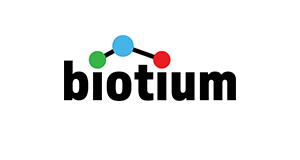CD106 / VCAM1(VCAM1/843), CF740 conjugate, 0.1mg/mL
CD106 / VCAM1(VCAM1/843), CF740 conjugate, 0.1mg/mL
Artikelnummer
BTMBNC740843-100
Verpackungseinheit
100 uL
Hersteller
Biotium
Verfügbarkeit:
wird geladen...
Preis wird geladen...
Description: CD106 (also known as vascular cell adhesion molecule-1, or VCAM-1) is a member of the Ig superfamily of adhesion molecules. It is expressed at high levels on cytokine stimulated vascular endothelial cells, and at minimal levels on un-stimulated endothelial cells. It is also present on follicular and inter-follicular dendritic cells of lymph nodes, myoblasts, and some macrophages. CD106 serves as a ligand for leukocyte beta-1 integrin VLA-4 and mediates cell adhesion of leukocytes to activated endothelium. It plays a role in various immunological and inflammatory responses.Primary antibodies are available purified, or with a selection of fluorescent CF® Dyes and other labels. CF® Dyes offer exceptional brightness and photostability. Note: Conjugates of blue fluorescent dyes like CF®405S and CF®405M are not recommended for detecting low abundance targets, because blue dyes have lower fluorescence and can give higher non-specific background than other dye colors.
Product origin: Animal - Mus musculus (mouse), Bos taurus (bovine)
Conjugate: CF740
Concentration: 0.1 mg/mL
Storage buffer: PBS, 0.1% rBSA, 0.05% azide
Clone: VCAM1/843
Immunogen: Recombinant human VCAM1 protein
Antibody Reactivity: CD106/VCAM-1
Entrez Gene ID: 7412
Z-Antibody Applications: IHC, FFPE (verified)
Verified AB Applications: IHC (FFPE) (verified)
Antibody Application Notes: Higher concentration may be required for direct detection using primary antibody conjugates than for indirect detection with secondary antibody/Immunofluorescence: 1-2 ug/mL/Immunohistology formalin-fixed 0.5-1 ug/mL/Staining of formalin-fixed tissues requires boiling tissue sections in 10 mM Tris with 1 mM EDTA, pH 9.0, for 10-20 min followed by cooling at RT for 20 minutes/Flow Cytometry 0.5-1 ug/million cells/0.1 mL/Optimal dilution for a specific application should be determined by user
Product origin: Animal - Mus musculus (mouse), Bos taurus (bovine)
Conjugate: CF740
Concentration: 0.1 mg/mL
Storage buffer: PBS, 0.1% rBSA, 0.05% azide
Clone: VCAM1/843
Immunogen: Recombinant human VCAM1 protein
Antibody Reactivity: CD106/VCAM-1
Entrez Gene ID: 7412
Z-Antibody Applications: IHC, FFPE (verified)
Verified AB Applications: IHC (FFPE) (verified)
Antibody Application Notes: Higher concentration may be required for direct detection using primary antibody conjugates than for indirect detection with secondary antibody/Immunofluorescence: 1-2 ug/mL/Immunohistology formalin-fixed 0.5-1 ug/mL/Staining of formalin-fixed tissues requires boiling tissue sections in 10 mM Tris with 1 mM EDTA, pH 9.0, for 10-20 min followed by cooling at RT for 20 minutes/Flow Cytometry 0.5-1 ug/million cells/0.1 mL/Optimal dilution for a specific application should be determined by user
| Artikelnummer | BTMBNC740843-100 |
|---|---|
| Hersteller | Biotium |
| Hersteller Artikelnummer | BNC740843-100 |
| Verpackungseinheit | 100 uL |
| Mengeneinheit | STK |
| Reaktivität | Human |
| Klonalität | Monoclonal |
| Methode | Immunohistochemistry |
| Isotyp | IgG1 kappa |
| Wirt | Mouse |
| Konjugat | Conjugated, CF740 |
| Produktinformation (PDF) | Download |
| MSDS (PDF) | Download |

 English
English







